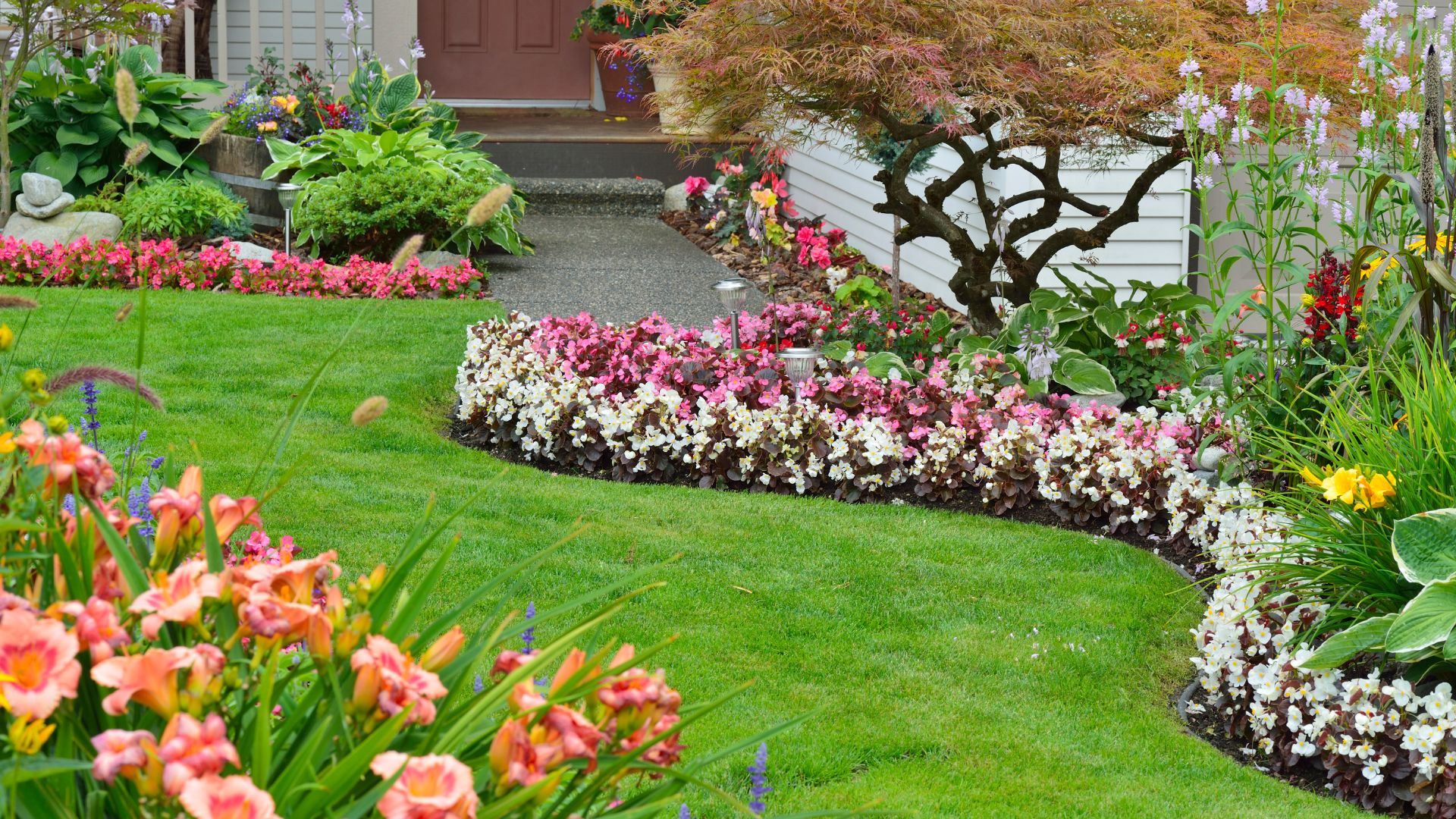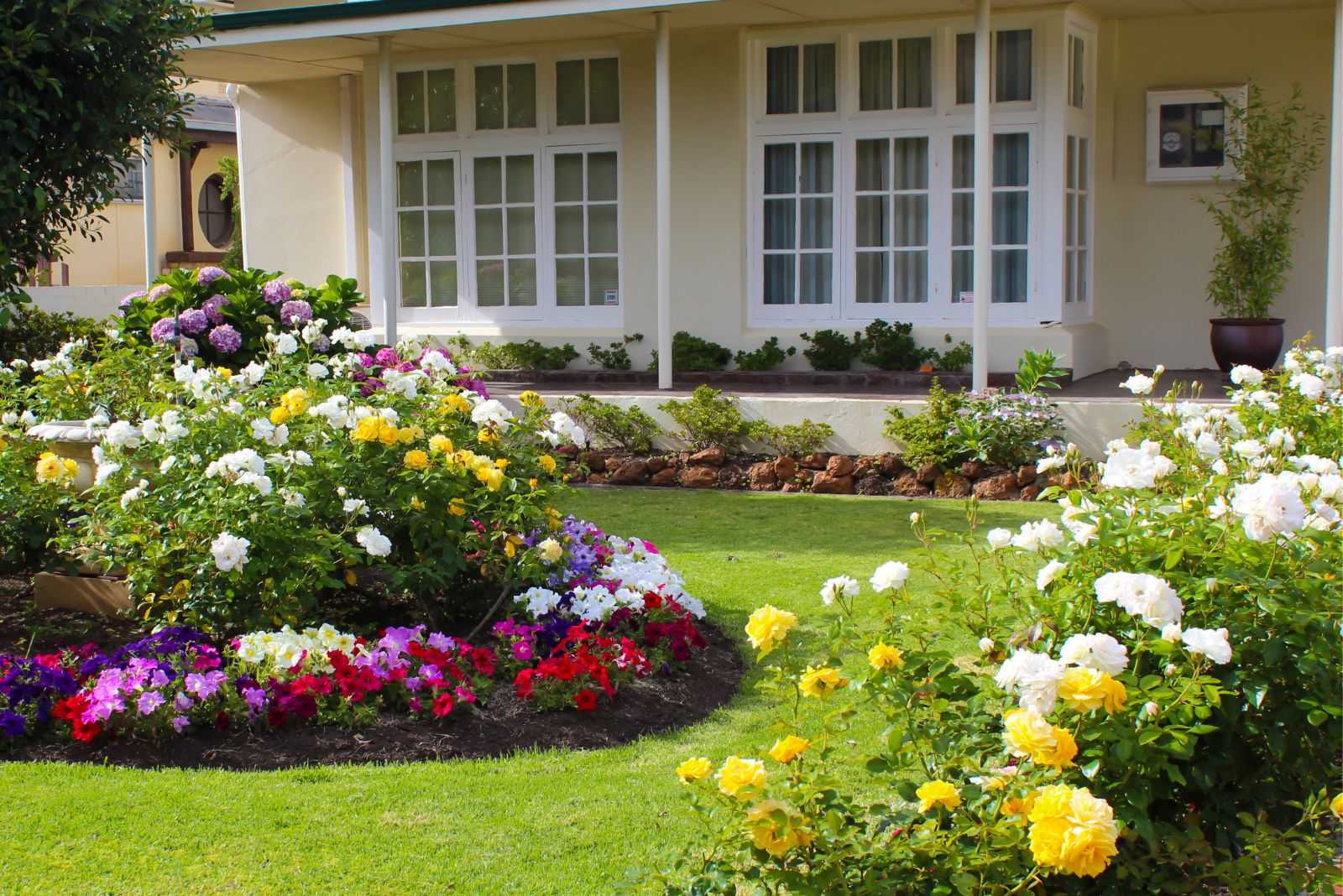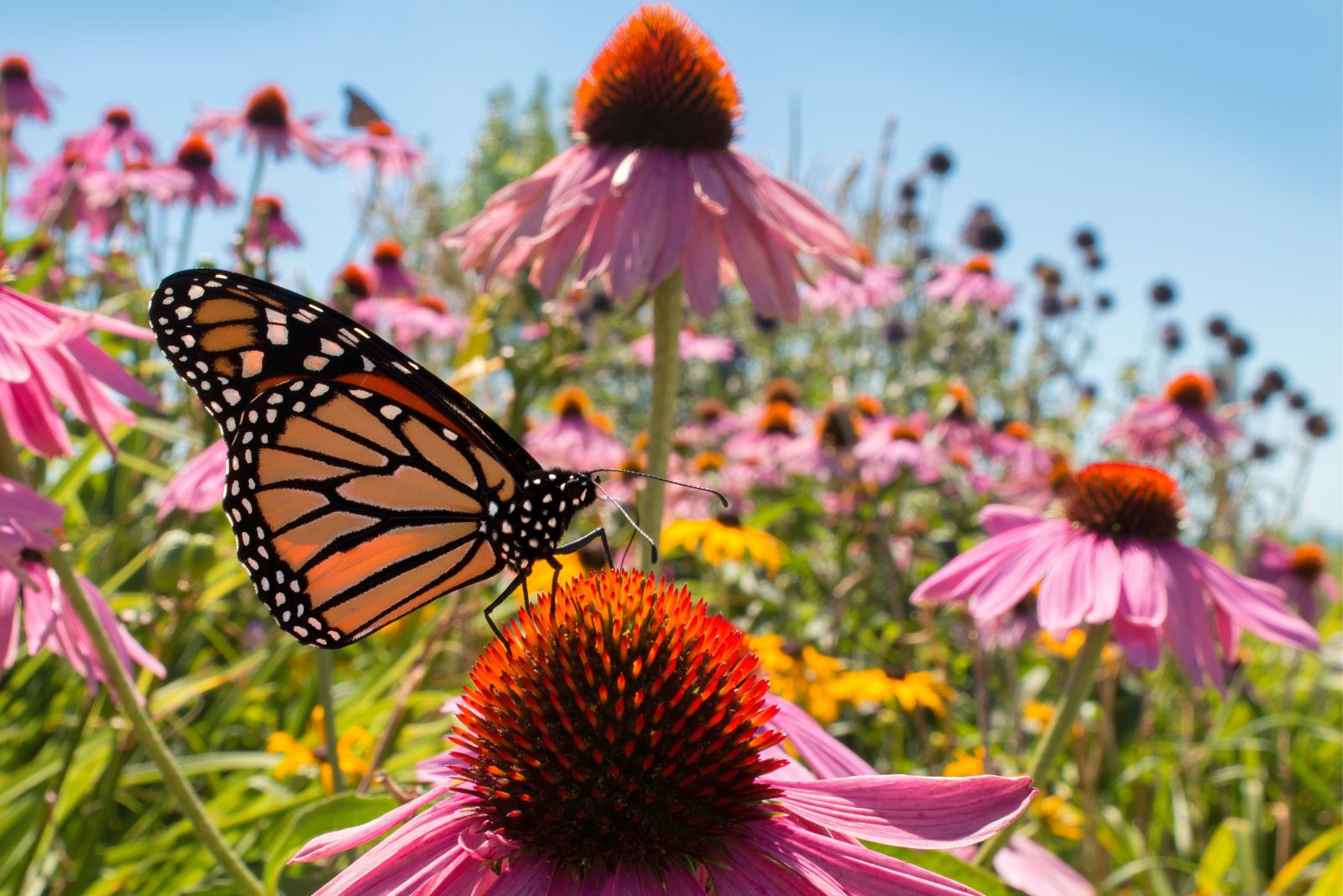If you want to create a natural garden filled with birds and butterflies, then you have come to the right place!
A natural garden is the perfect solution for replacing your boring lawn or fixing shaded areas in your garden. Just imagine transforming your lawn into a vibrant haven that sustains itself!
If you are worried that your garden will look messy, here are five steps that will help you design the garden of your dreams!
Step 1: Don’t Plant Too Many Flowers
Planting too many flowers will only lead to overcrowding and competing for nutrients. The general rule is to plant three types of perennial plants blooming at the same time.
Rest assured, your garden won’t lack blooms by embracing the “rule of three.” This clever approach keeps your floral display lively all season long. Plus, once your neighbors spot what’s happening in your garden, I bet they will do the same thing next season!
Sure, if you have a large garden, you can always plant more than 3 flowers. However, the best things come in threes.
Also check: 25 Gorgeous Pink Perennial Flowers For Every Season
Step 2: Choose Plants That Flower At Different Times
Most flowers bloom at different times – some start blooming in early spring, some in late summer, some in early fall, etc. So, in order to avoid having a bloom-free garden, pick flower species that bloom at different times.
For instance, you can opt for long-blooming perennials that will produce flowers more than the rest of your plants. Perennials for fall gardens like astilbe or lavender are perfect for late season blooming.
Just remember to strategically plan your garden – do a little research about the plants you are about to grow and make sure that they have the best growing conditions. This way, your garden will be filled with flowers, bees, birds, and butterflies all the time!
Step 3: Opt For Native Plants
You should always consider planting some native plants in your garden. These are the plants that have grown accustomed to the weather and wildlife in your area. By picking native plants, you are helping your garden thrive more easily.
Think of native plants as your garden’s best buddies. They attract the bees, butterflies, and birds that are used to your neighborhood. These plants know the land and its rhythms, making them hardy and reliable.
Sure, you may admire some plants like Monsteras but that doesn’t mean that they will grow well in your garden, especially if you live in a drier climate. You should always take into consideration the plant’s growing requirements.
If these requirements don’t align with the growing conditions in your garden, then it’s best to choose some other plants that can easily adjust.
For all my Iowa friends, check out these 15 Iowa Native Plants That Can Spruce Up Your Garden.
Step 4: Shorter Plants Are Better
Shorter plants are better, especially if you are growing them in your front yard or foundation bed. Opt for species that are not taller than 2 or 3 feet. They might be small, but they bring big charm to your space.
Short plants create a lovely base for your garden. They add texture and variety while letting taller plants shine. Mixing short and tall plants makes your garden captivating from every angle.
It will be a lot easier for your neighbors to admire your yard without any tall plants blocking their view; plus, you will be able to look out of the window without anything disturbing in front!
Step 5: Plant & Repeat
Now that your natural garden is taking shape, let’s add a dash of magic – repetition. Planting and repeating certain things gives your garden a beautiful rhythm.
Repeating plants is like a familiar tune. It brings everything together, making your garden feel balanced and cozy. For instance, you can group plants in 3 or 5, and then repeat them 3, 5 or 7 times!
It’s important to keep the distance between them, so make sure to plant everything about 12 inches apart. This way, you will avoid overlapping and create a wonderful habitat that will attract wildlife into your garden.
If you want to know more about designing your own naturalistic garden, make sure to check this video:



